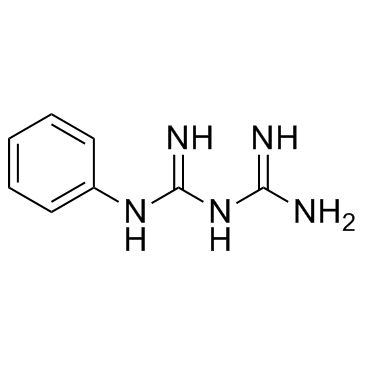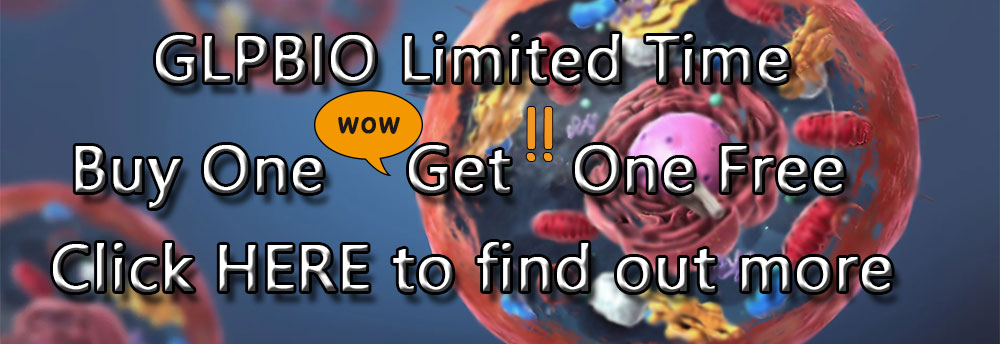Phenylbiguanide (N-Phenylbiguanide) |
| Catalog No.GC30953 |
페닐비구아니드(N-페닐비구아니드)는 EC50이 3.0±0.1 μM인 5-HT3 수용체 선택적 작용제입니다.
Products are for research use only. Not for human use. We do not sell to patients.

Cas No.: 102-02-3
Sample solution is provided at 25 µL, 10mM.
Phenylbiguanide is a 5-HT3 receptor selective agonist with an EC50 of 3.0±0.1 μM.
Phenylbiguanide (1-Phenylbiguanide) is a 5-HT3 receptor selective agonist with pEC50s of 5.57, 4.07, and 4.47 for r5-HT3A(b), h5-HT3A, m5-HT3A(b) , respectively[1]. The effect of Phenylbiguanide (1-Phenylbiguanide hydrochloride) in promoting the growth of the HT29 cell line is investigated. Phenylbiguanide causes a dose dependent proliferation of HT29 cells after 48 hours incubation. The maximum proliferation is at a 5HT concentration of 12.5 μM (P≤0.01). Phenylbiguanide significantly stimulates the growth of cells at concentrations of 3.125 μM (P≤0.05) and 6.25 μM (P≤0.01)[2].
In anaesthetised mice, Phenylbiguanide (PBG), a drug that is known to stimulate cardiopulmonary afferent C-fibres,is injected into the right atrium of the heart and mapped c-Fos expression within specific regions of the central nervous system. Intraatrial injection of PBG produces a reflex cardiorespiratory response including a pronounced bradycardia and a respiratory depression[3].
[1]. Mair ID, et al. Pharmacological characterization of a rat 5-hydroxytryptamine type3 receptor subunit (r5-HT3A(b)) expressed in Xenopus laevis oocytes. Br J Pharmacol. 1998 Aug;124(8):1667-74. [2]. Ataee R, et al. Study of 5HT3 and HT4 receptor expression in HT29 cell line and human colon adenocarcinoma tissues. Arch Iran Med. 2010 Mar;13(2):120-5. [3]. de Vries A, et al. Characterisation of c-Fos expression in the central nervous system of mice following right atrialinjections of the 5-HT3 receptor agonist Phenylbiguanide. Auton Neurosci. 2005 Dec 30;123(1-2):62-75.
Average Rating: 5 (Based on Reviews and 32 reference(s) in Google Scholar.)
GLPBIO products are for RESEARCH USE ONLY. Please make sure your review or question is research based.
Required fields are marked with *




















